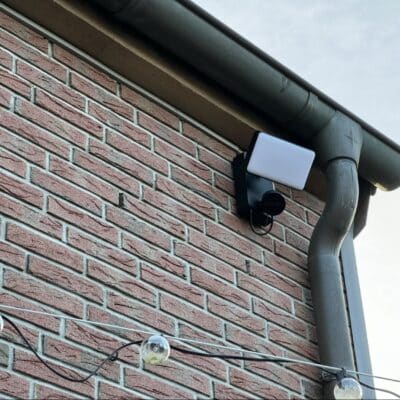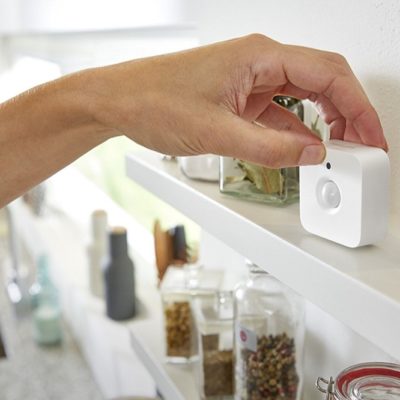Last week I was able to reveal to you that Philips Hue has not only changed the design of the packaging for the indoor motion sensor, but is also delivering a new hardware revision. On paper, there are the following changes: A new sensor that can detect movement at a distance of seven metres instead of the previous five, two additional sensitivity levels and a new setup button.
Especially with the motion sensitivity, I naturally asked myself how big the difference really is. And what can I tell you at this point? The difference is very small.
I placed both sensors directly next to each other and when I walked directly towards them, the new sensor always switched on the paired lamp a little earlier. But here we are really talking about a fraction of a second.
In addition, it was very difficult for me to move at a distance where the new sensor was already triggered, but the old motion sensor was not. We are certainly not talking about a difference of two metres. However, I did notice that the new motion sensor from Philips Hue already reacts to smaller movements at the maximum level.
New Hue motion sensor not yet compatible with Hue Labs
Another difference is the measured temperature, which can be viewed via Hue Labs or third-party apps such as iConnectHue or HomeKit. The new sensor shows it almost three degrees more, which is absolutely not matching. But when it comes to accurate temperature measurement for the smart home, I would go for a device specialised for that anyway.
At the moment, users who want to use the motion detector in Hue Labs, for example for the formulas “Three times is a charm” or “Sunlight as a switch”, have a problem. In Hue Labs, the new motion detector, which is also declared as SML003 in the Hue app, cannot be selected.
Philips Hue Motion Sensor
$44.99 / £39.99 / €44,99
Note: This article contains affiliate links. We receive a commission for purchases via these links, which we use to finance this blog. The purchase price remains unchanged for you.































Is the temperature sensor still included? Is there perhaps a change in how well it’s calibrated?
Yes, the new one is “almost three degrees more”, but is that three degrees more accurate, or less?
I compared the temperature of the new motion sensor with my heatingthermostat and an Aqara temperature sensor and the the difference was only 0,1 degree C between them.
So it appears to be accurate.
In case anyone is still curious about the temperature sensors in these things: I’ve been using the new Indoor and Outdoor Motion Sensors for several months now and comparing them with my older models they have more or less retained the same temperature reading.
They’re not the most accurate and if you have accessories that do temperature first and foremost, your Hue Motion Sensor will be the outlier, but if accuracy isn’t a requirement at all then its fine for what it is. The difference can vary between 1° to 3° depending on where or how you install them. My dedicated temperature sensors in HomeKit are pretty consistent with each other and the Hue Motion Sensors have always been the outliers.
My Tado AC, QP AML, Eve Room, Eve Weather, and other accessories that are climate-related all report the same temperature. It’s only the Hue that’s always different.
I have to say I appreciate the increased sensitivity controls. I didn’t think I just needed to crank up the sensitivity further for certain rooms that wasn’t possible previously with the older sensors. The extra sensitivity helps make my automations more reliable in some rooms where I only move a bit at a time and the older sensor would normally consider such movement not enough to trigger. The new ones do.
I just wish Philips Hue would consider letting users reduce the reset time from ~10s to 5s at least like the Eve Motion Sensor.
Personally i find it pity the new motion sensor doesn’t have a presence sensor.
That would avoid the situation of the lights turning off when I’m still in the room…
The temeprature issue might be related to the location of the temp sensor.
If the temp sensor is higher in the electronics then it will receive the heat of the sensor electronics.
If you turn it on it’s head, the sensor is below the electronics, and is therfore not impacted so much by the electronics temperature
is the new sensor now compatibel with hue labs?
After reading your article and looking at the pictures I have no idea which is the new one, on the right or the left in the picture ?
I agree with your conclusion, but I’ve found out that on the first picture, the new v2 version is the smaller “you cannot see wat is in the box” package at the left.